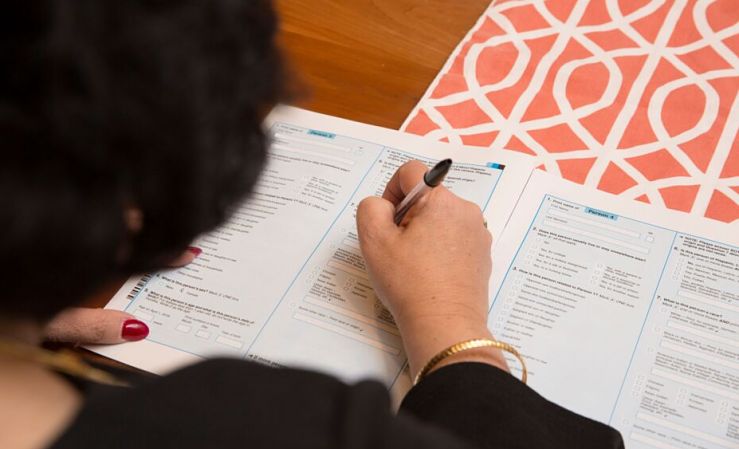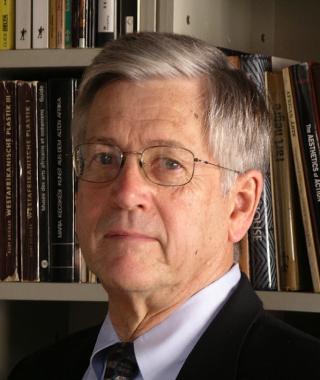Will the 2020 Census Be the Last of Its Kind?

Could the 2020 iteration of the United States Census, the constitutionally mandated count of everyone present in the nation, be the last of its kind? Former census director Ken Prewitt, currently president of the American Academy of Political and Social Science and Carnegie Professor of Social Affairs at Columbia University’s School of International and Public Affairs, asked that question during his keynote at the Data Science for the Public Good Annual Symposium last month.
With a California-based federal appeals court just today ordering the Census Bureau to continue its counting a month beyond the cut-off announced by the Trump Administration, you might think Prewitt focused on current threats to the institution. Instead, he looked at opportunities. Prewitt offered a deeper dive into what the Census could evolve into, with technological advancement and a deluge of data from other sources that aren’t competitive but collaborative mattering more than the current kerfuffles.
Prewitt didn’t deny the issues of 2020, which he has seen subject to more political influence – more “messing around” with an inherently apolitical production process — than any in U.S. history. “The only thing that comes close is 1920,” he said, and that census’s results were rejected by Congress. Should this census not achieve the quality of past ones, he argued, “I would argue very strongly to continue to use the 2010 Census.”
In addition to its steady longitudinal data of such value to social science, an estimated $1.5 trillion is at stake in census-based federal spending, while the redistricting of legislatures is based on census data, so the U.S. Census is fundamentally important to the country. And so how the census comes together also matters.

Prewitt outlined three different models the United States has used to conduct the Census. The first, and archetypal model, centers on the idea of the enumerator as a physical person who contacts people directly. And indeed, for the first 17 censuses, Prewitt explained, this “basic knock-on-the-door model” was the standard, starting in 1790 when federal marshals asked three questions.
In 1960, the Census Bureau experimented with mailing people a census form, but then having an enumerator physically show up and pick up the completed form. That worked well enough that by 1970 the bureau went entirely to mail-out. It was, said Prewitt, “quicker, cheaper and generally more accurate.” An enumerator went to the door only in cases where there was a non-response.
This postal process, Prewitt’s model 2, saw response fall off, with each count being roughly 10 percent lower than the previous one. By 1990, he explained, “there was a lot of anxiety in the Census Bureau and in particular in the Congress” as cost rose and participation fell. With a predicted 55 percent response, a panicky Congress told the bureau it needed a new model for the new millennium.
“And so in 2000 mail-out got a facelift – and I mean that literally,” Prewitt said. It spent $165 million on paid advertising and created partnership with what were considered “trusted voices.” This meant the face of the Census was no longer the enumerator but a local person or organization with credibility, although there was an effort to show Census personnel in an almost heroic light. Prewitt, who was director at this point, recalled being filmed on a bobsled in Alaska to count the first person that year. It was, he added, such a media success that something in that vein is now standard part of the count’s media rollout.
The confederation with outside parties also meant that there was now a volunteer force “loosely managed” by the Census Bureau. Meanwhile, the year 2000 also saw, for the first time, corporate, advocacy, foundation and local government money being spent to ensure participation. These parties have their own interests, and while the Census Bureau aims to be agnostic on the red state/blue state divide, “the public cannot distinguish between what the bureau is doing and what all these quasi-independent actors are doing all under the banner of ‘The Census’,” Prewitt lamented, adding that local promotion (or non-promotion) can bias census results and complicate the bureau’s basic fairness principles.
Nonetheless, if a measure of model 3’s success was in stopping the fall, then 2000 was a success at 66 percent self-response, Prewitt said, with subsequent improvements in 2010 and yes, even in this census. However, looking at in a different light, more effort has only managed to hold the line on the self-response rate. “More dollars and more effort just to stand in place,” as Prewitt termed it, adding that model 3 will always have a non-response problem – “a structural weakness at heart of the model” — which will require an heroic effort to redress.
Prewitt offers a heroic solution.
He suggests “a 21st century information model” that is tasked more with data curation than with data collection. “The country is swimming in information,” he said. “It’s not like there isn’t data around.”
For a start, there’s already troves of federal administrative data that can give a baseline of would be considered “essential data,” the traditional stuff of where everyone is on April 1 of a year ending in 0. The Bureau’s annual American Community Survey, which takes place every year, could be enlarged and other sources of administrative and so-called “register” data could be enlarged.
Secondly, better linkage to federal statistics would give those figures more value for money already spent; “much of the value of this data is wasted by remaining in silos rather than being shared.”
While Prewitt’s case is prescriptive, it’s not speculative – to an extent, it’s already happening. The Household Pulse Survey, in which seven agencies are working together under the aegis of the Census Bureau to gather a much richer – and much quicker — data set than the decennial census alone would provide. The survey was sparked by the need for breaking news on COVID-19, and so was “designed to be a short-turnaround instrument that provides valuable data to aid in the pandemic recovery” with information about employment status, food security, housing, physical and mental health, access to health care, and educational disruption being gathered.
Prewitt also touched on the possibility of including data from private industry, such as social media, in a new census mosaic. The Dutch, he noted, have already started down this route of augmenting government data with commercial data.
This model of corralling federal statistics (and more) under one roof leads Prewitt to call for Department of Data Curation, since even just the existing firehoses of information would overwhelm existing structure and make it nigh impossible to routinely judge the quality of the data arriving daily. Integral to the department, he said, would be social scientists who would both fuel the enterprise and be its investigators.
More so than the mechanics, though, Prewitt feels public acceptance of this new curation effort is important. “If people feel government is making new surveillance state, we’re finished,” he predicted. “It won’t work unless American people trust it,” adding that it’s his belief that mistrust of government underlies the nettlesome and persistent non-response rate of the census.





























































































